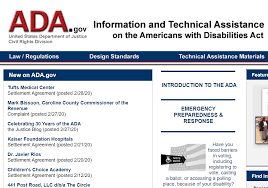Devices used for browsing webpages vary from the latest iPhone, to the desktop computer with the CRT monitor used by your grandmother. Webpages won't appear precisely the same way on both devices, but the desired content needs to be readable across all platforms.

Some users can't even read the content, and use audio screen readers for webpage consumption. For these reasons, among others, it's important to have your HTML validated. Several entities offer this service, which one can use by either entering their URL, or by uploading their HTML. This makes your code, and what you want to share with the world, available to all.
It should be noted from the outset that website accessibility should not require a government mandate for any kind of compliance. The incentive of performing best business practices should resolve any concerns about accessibility long before the Department of Justice would or should ever need to get involved.
That said, the U.S. government's ADA website offers a great list of considerations for accommodation in web design. In addition to covering more obvious accommodations for the legally blind, such as ensuring that images are tagged with text that can be uttered by screen reading technology, it also reminds developers that people with less obvious impairments, such as color blindness, can be better served than they sometimes are. The feds don't offer guidelines themselves, but they indicate that use of the Web Content Accessibility Guidelines (WCAG) and the Section 508 Standards are likely suitable for ensuring compliance.
